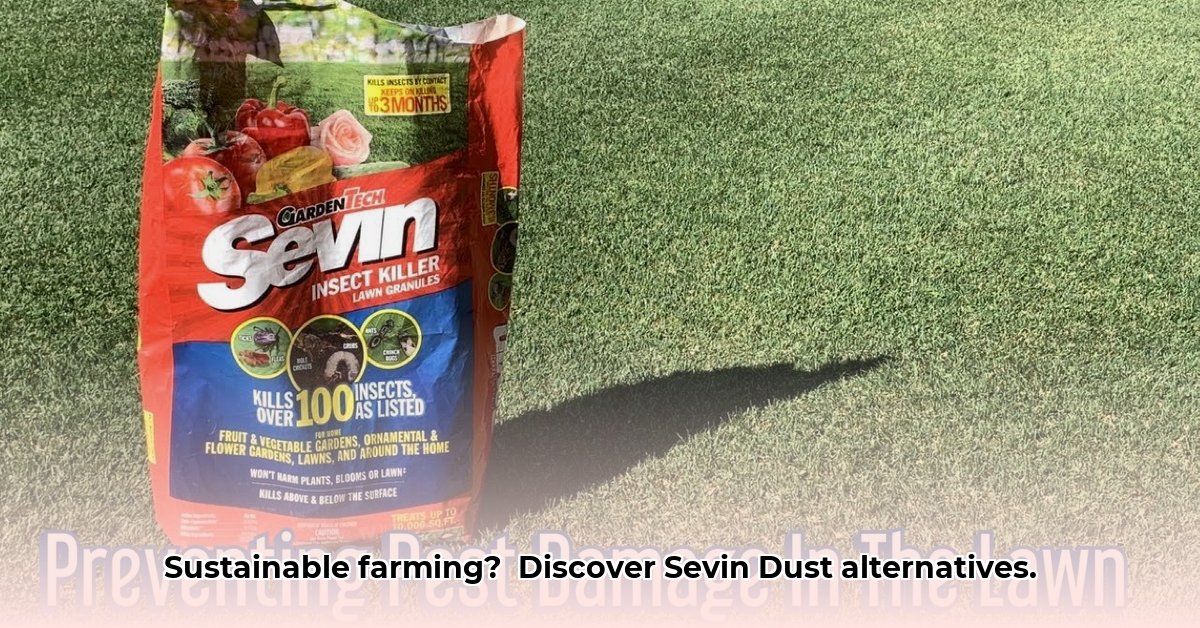
Finding Sevin dust at Tractor Supply is easy, but is it the right choice for your crops and the planet? This article explores sustainable alternatives for healthy crop production. For more information on chemical alternatives, check out this resource.
The Downsides of Sevin Dust: More Than Just Bugs
Sevin dust, a broad-spectrum insecticide, effectively kills many insect pests. However, its broad approach isn't sustainable. It harms beneficial insects alongside pests, disrupting the ecosystem. This indiscriminate killing impacts pollinators and natural pest control agents. Furthermore, repeated use leads to pesticide resistance, necessitating even more applications. The chemical residues persist in soil and water, potentially harming wildlife and contaminating the food chain. Is this the kind of legacy you want to leave on the farm and the environment?
A Smarter Approach: Integrated Pest Management (IPM)
Integrated Pest Management (IPM) offers a more sustainable approach to pest control. Instead of relying solely on chemicals, IPM focuses on prevention and minimizes pesticide use. It's a holistic strategy that integrates various techniques to manage pest populations effectively and sustainably.
Implementing IPM: A Step-by-Step Guide
Monitor Regularly: Closely inspect crops for pests and signs of damage. Early detection allows for less-intensive interventions. Regular checks prevent minor problems from escalating into major infestations. This proactive approach is cost-effective in the long run.
Prioritize Prevention: Implement cultural practices that discourage pest development. Rotate crops, choose pest-resistant varieties, and maintain good farm hygiene. Healthy crops are naturally more resilient to pest attacks. This strengthens your farm's natural defenses.
Leverage Biological Control: Introduce beneficial insects like ladybugs or praying mantises, which act as natural predators. These natural allies reduce pest pressure significantly, minimizing the need for chemical intervention. Research which beneficial insects are best suited for your region and crops.
Targeted Interventions: If necessary, use targeted pesticides only as a last resort – and only after employing the previous strategies. Even then, choose the least toxic option. Always strictly follow label instructions to minimize environmental impact and potential human health risks. How many times have you seen seemingly simple solutions completely eliminate a minor infestation?
Implementing IPM requires more planning and observation compared to simply using Sevin dust, but it fosters a resilient and healthy agroecosystem. It's an investment in your farm's long-term prosperity and environmental responsibility.
Natural Pest Control: Bio-Control in Action
Beyond beneficial insects, bio-control includes:
Parasitic Wasps and Flies: These natural enemies parasitize pest insects, controlling populations naturally. They are a powerful tool in many IPM strategies.
Nematodes: Microscopic worms that attack soil-dwelling pests. Nematodes offer effective root pest control in a natural and sustainable way.
These bio-control methods are safer for the environment and human health, offering a stark contrast to the broad-spectrum approach of Sevin dust.
Sevin Dust vs. Sustainable Alternatives: A Comparative Analysis
| Feature | Sevin Dust | Sustainable Alternatives |
|---|---|---|
| Initial Effectiveness | High | Can be slower initially; more effective long-term |
| Environmental Impact | High | Low |
| Cost | Relatively low initial cost | Potentially higher upfront investment; lower long-term costs |
| Long-Term Sustainability | Low | High |
| Human Health Risks | Moderate to High | Low |
While Sevin dust provides quick results, sustainable alternatives represent a healthier, more responsible approach. The long-term benefits – environmentally and financially – far outweigh the initial cost differential.
How to Implement Cost-Effective Sustainable Pest Management Strategies for Small Farms
Dr. Eleanor Vance, Professor of Entomology at Cornell University, notes, "Sustainable agriculture demands a shift from reactive to preventative pest management. IPM provides this adaptable framework." This means understanding the ecosystem and working with it, rather than against it.
Key Takeaways:
- Sevin dust's broad-spectrum effects harm beneficial insects and the environment.
- IPM is a proactive, holistic system that prioritizes prevention.
- IPM utilizes natural predators and minimizes chemical use.
- Small farms can successfully adopt cost-effective IPM strategies.
This paradigm shift requires a commitment to education, observation, and long-term planning. But the rewards—healthier crops, a healthier environment, and potentially greater profitability—are substantial. Are you ready to make this change?